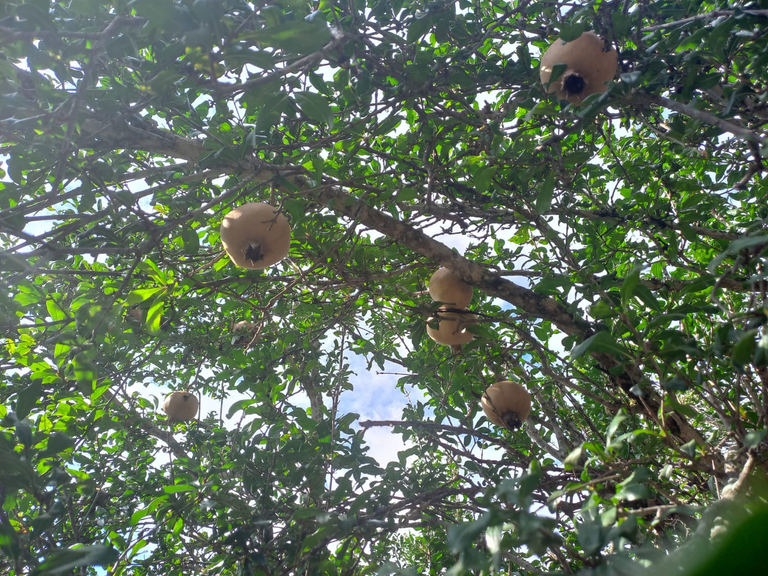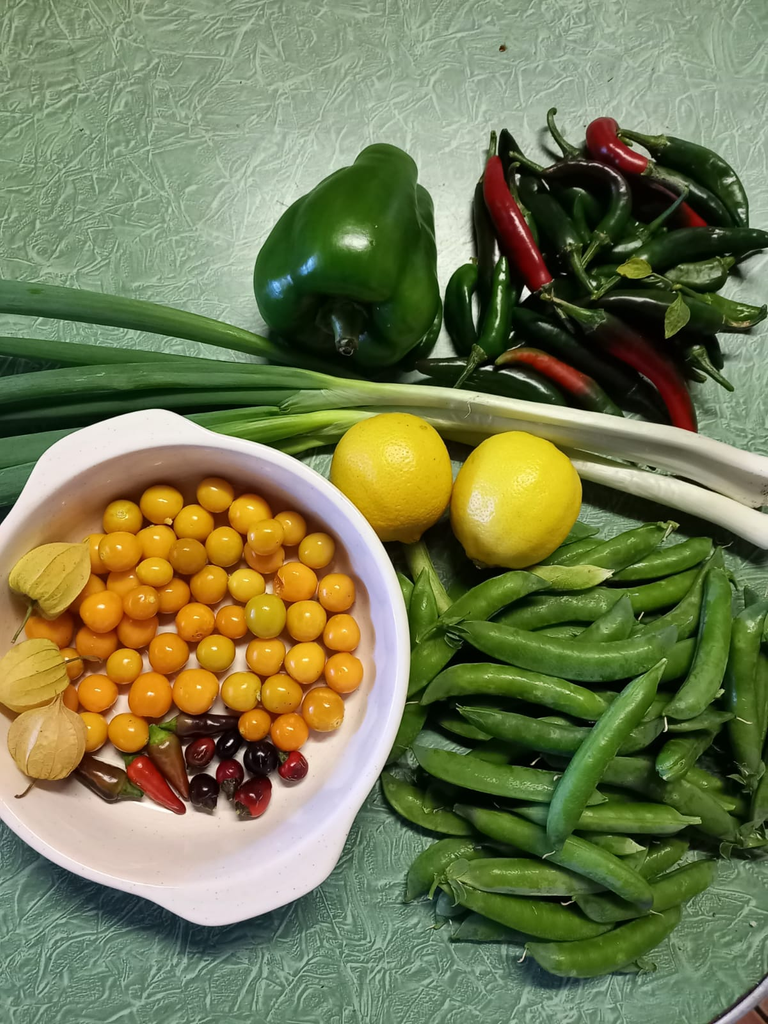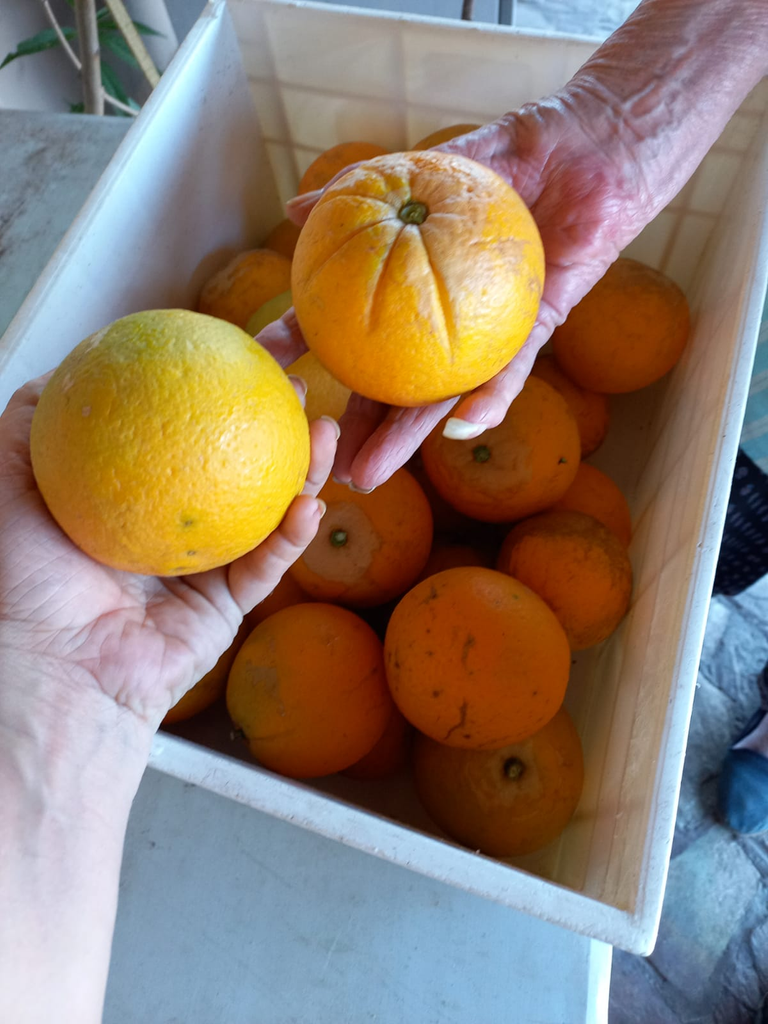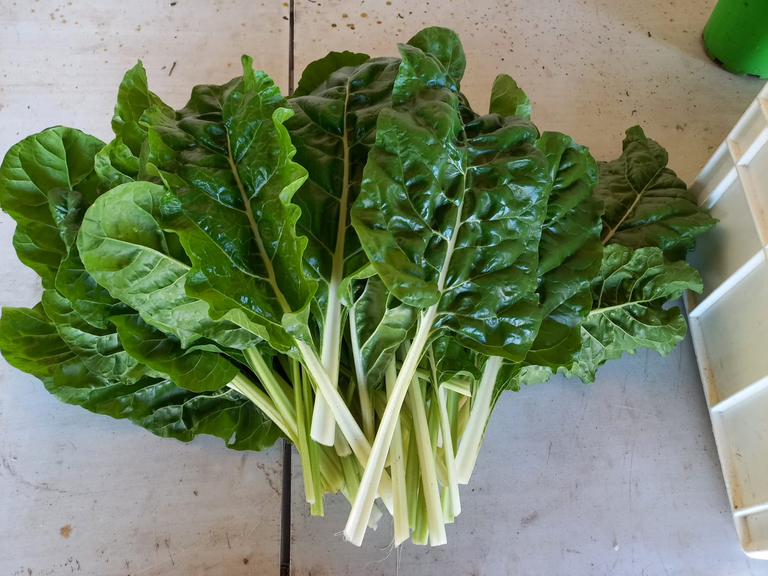Living a sustainable life revolves around a great deal of blood, sweat, and tears. It involves constant planning and preparation and a fair share of mental gymnastics to overcome any obstacles in your way.
Through all the losses and mishaps, a lot of hard work and endurance meant that the food production for the house carried on despite all the setbacks.
Here is a look at some of the successful produce that was harvested despite the dry farm conditions.
So although the commercial crops didn't work out as planned, the fruit and veg supply for the household was kept up. The fact that the household crops are on a much smaller scale than the commercial crops means that they use a lot less water, and the majority of the fruit trees are planted on dry land, meaning that they no longer require irrigation once they are established and maintain themselves solely on annual rainfall.

The pomegranate tree has really surprised me, this tree has shown immense resilience to the dry conditions as well as disease and pests, and although it dies back every year and looks like a bunch of dead sticks hopelessly anchored to the earth, it shoots right back into top form at the first sign of rain every year, and produces the most delicious fruit.
Pomegranates take many years before the tree reaches fruiting maturity, but the tolerance and production of this tree make it worth the wait. For those reasons, I have started propagating more pomegranate trees from cutting that I have taken from the mother plant.

Soft flesh vegetables are grown under a natural canopy that I established from granadilla (passion fruit) vines. This helps deter water evaporation from the soil while protecting the plants from the harsh African sun, which, even in the heart of winter, can be a threatening force for plants to deal with.
The Granadilla canopy was started about eight years ago, it provides a happy environment for plants to grow under while producing seasonal fruits twice a year. It takes minimal maintenance once established and has been one of the smarter effort investments I have implemented. This has helped us to maintain a growing environment for food despite the arid conditions.

Citrus trees have proven their worth as well despite standing on dry land, they have offered an abundance of fresh fruit year after year. The Citrus fruits that I currently have includes navel oranges, lemons, naartjie (tangerines), and grapefruit.
These trees provide a much-needed source of Vitamin C during the winter months, and excess fruit can be constructed into delicious treats that can be stored year-round, such as jams, preserves, marmalades, and cordials. Fresh juice can also be squeezed out and frozen for a few months.

Growing produce in self-built net houses has proven to be a great way to pull through. Although not as effective as the natural granadilla canopy, the net houses provide 40% shade over crops and protection from external elements such as monkeys who would otherwise devastate a crop. With micro irrigation installed, water consumption is kept at a minimum while reducing water evaporation but still allowing ample sunlight through for optimum growth.
One of the crops that I grew in the net houses this year was swiss chard, a nutritious iron-rich leafy vegetable that can be prepared in various ways for the dinner table.
I would love to hear from you regarding tried and tested methods of growing food during harsh conditions, so feel free to pop a comment below the post!
I don't have monkeys to deal with here, but deer, slugs, and snails have brutally browsed my hapless garden. While my neighbors (that learned of it) were outraged, I dealt with the deer by peeing in a milk jug and splashing it on the leaves of their favorite browse, like my raspberries and strawberries, tomatoes, and even corn. Treating the leafy parts of the plants weekly, or after rain, well deterred deer. Oddly, I got the idea from my dear departed grandmother, who told of the leaky gaskets of the Model A Ford back in the day and running out of water with which to refill the radiator when it ran dry. She laughed uproariously when relating how she was perched on the hood, poised over the radiator to pee into it when a car came around the corner and trapped her in it's headlights.
When the fruits began to ripen and I couldn't pee on the plants anymore, I constructed a cage of field fencing to keep deer to only the parts their rapacious muzzzles could reach, and that allowed some fruit to remain unavailable to them.
I have been unable to cope with slugs and snails. Commercial poisons work, but I have no sheltered space to keep them in, and the bag of it I got early in the year was ruined by rain, becoming a sodden, moldy mass by June, and unable to be spread around the tasty greens the molluscs savagely grazed. Interestingly, European land snails - escargot - are thick as fleas on a dog here, and I have considered harvesting them since I can't harvest peas or beans of any kind because the snails are insatiable and unable to be fenced out.
Beets turned out to be resistant to both deer and molluscs though, so I ate a few kilos of them this year. I consider the raspberries relatively successful too, as I was able to eat a few from June to November this year, the last indomitable berry still trying to ripen while being battered by buckets of monsoon rain as we speak. I do not hold out any hope it will ripen before the mold takes it's toll.
I need an army of elves mounted on mice with tiny shotguns to shepherd my fields against the Orcian hordes of slugs if I ever hope to grow any legumes.
Better luck than mine be yours in coming seasons.
Thanks!
just goes to show that we all have our battles with nature.
As for the snails, it is not a big problem here, but when I was working on the coast a few years back doing landscaping, I know that people there were struggling with it. The three things that people swore by were salt, crushed eggshells, and Diatomaceous earth
I may have to resort to eggshells or diatomaceous earth, as I prefer not to salt my garden soil, and can't recruit any tiny elves to patrol the garden. However, I am seriously considering trapping the snails, as I have eaten them before, and cooked right with herbed butter, they are far more tasty and nutritive than even peas and beans.
Thanks for the tips!
That looks like some incredible work and some great results. Awesome stuff.
I grew up on the Canadian prairie and, though I'm not a farmer, I appreciate the work that goes into dry farming. It's time consuming and difficult. Good for you for having such great results.
Thank you ever so much. It has been trying times, but we do what we can :D